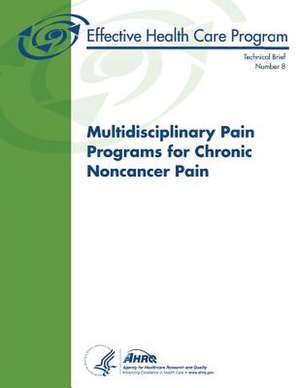Multidisciplinary Pain Programs for Chronic Noncancer Pain
Autor U. S. Department of Heal Human Services, Agency for Healthcare Resea And Qualityen Limba Engleză Paperback
Preț: 176.16 lei
Preț vechi: 185.43 lei
-5% Nou
Puncte Express: 264
Preț estimativ în valută:
33.71€ • 36.05$ • 28.11£
33.71€ • 36.05$ • 28.11£
Carte disponibilă
Livrare economică 27 martie-10 aprilie
Preluare comenzi: 021 569.72.76
Specificații
ISBN-13: 9781484094730
ISBN-10: 1484094735
Pagini: 296
Dimensiuni: 216 x 280 x 16 mm
Greutate: 0.69 kg
Editura: CREATESPACE
ISBN-10: 1484094735
Pagini: 296
Dimensiuni: 216 x 280 x 16 mm
Greutate: 0.69 kg
Editura: CREATESPACE
